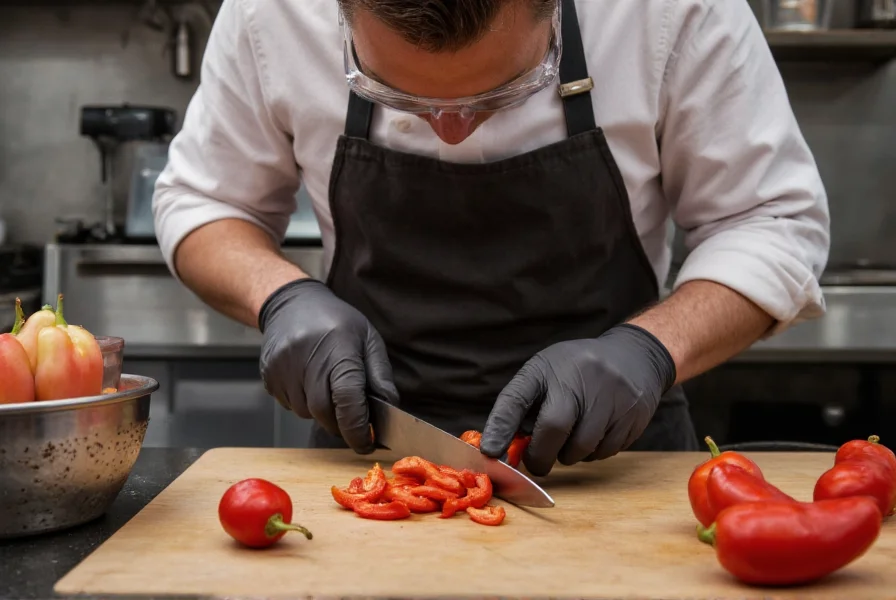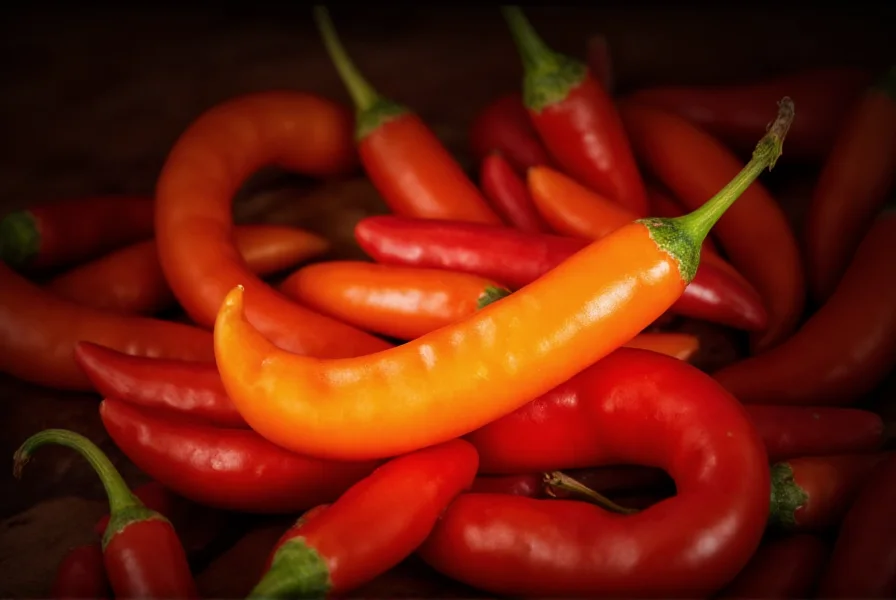The ghost chili, scientifically classified as Capsicum chinense 'Bhut Jolokia,' represents a pinnacle of heat in the culinary world. This extraordinary pepper first captured international attention when Guinness World Records certified it as the world's hottest chili in 2007, a title it held until 2011. Understanding ghost chili characteristics, proper usage, and safety considerations is essential for anyone interested in exploring extreme heat in cooking.
Ghost Chili Origins and History
Contrary to popular belief that ghost chilies are a modern creation, they've been cultivated for centuries in the northeastern Indian states of Assam, Nagaland, and Manipur. Local communities traditionally used these peppers not only in cuisine but also as a defense mechanism against wild elephants and for medicinal purposes. The name "ghost chili" derives from the Assamese word "Bhut," meaning ghost, suggesting the heat is so intense it could "kill you" or that you'd need to be dead to not feel the burn.
Scientific Classification and Varieties
Botanically, ghost chilies belong to the Capsicum chinense species, which includes other super-hot peppers like the Scotch bonnet and habanero. Despite the "chinense" designation suggesting Chinese origin, these peppers actually originated in the Americas. The ghost chili itself has several regional varieties:
| Variety | Region | Distinct Characteristics |
|---|---|---|
| Red Naga | Bangladesh | Bright red, slightly curved, extremely fruity flavor |
| Purple Bhut | India | Purple hue when young, slightly lower heat than red varieties |
| Yellow Ghost | Hybrid | Ripens to yellow, slightly different flavor profile |
Ghost Chili Heat Measurement
When discussing ghost chili scoville units, the numbers are staggering. Laboratory testing by New Mexico State University's Chile Pepper Institute revealed that ghost chilies average between 855,000 and 1,041,427 Scoville Heat Units (SHU). To put this in perspective:
- Jalapeño: 2,500-8,000 SHU (ghost chili is approximately 150 times hotter)
- Habanero: 100,000-350,000 SHU (ghost chili is 2-8 times hotter)
- Commercial pepper spray: 2,000,000-5,300,000 SHU (ghost chili approaches these levels)
The extreme variability in heat levels makes how hot is ghost chili compared to other peppers a complex question. Factors like growing conditions, soil composition, and even the specific part of the pepper being tested can dramatically affect results. The placenta (white ribs inside the pepper) contains the highest concentration of capsaicin, while the seeds themselves contain minimal heat.

Culinary Applications of Ghost Chili
Despite its fearsome reputation, the ghost chili offers complex flavor notes beyond just heat. Chefs describe its profile as having smoky, sweet, and slightly floral characteristics that emerge after the initial heat subsides. When exploring ghost chili culinary uses, consider these applications:
- Infused oils and vinegars - A small piece can flavor an entire bottle
- Curry bases - Traditional in Assamese and Manipuri cuisine
- Hot sauces - Often diluted with milder peppers for balance
- Meat preservation - Historically used for its antimicrobial properties
Professional chefs emphasize that less is more when working with ghost chilies. A single pepper can flavor an entire pot of curry. Many recommend starting with 1/8 to 1/4 of a pepper for a dish serving 4-6 people, then adjusting in subsequent preparations.
Essential Safety Precautions
Proper handling is non-negotiable when dealing with ghost chili safety precautions. The capsaicin concentration can cause severe irritation to skin, eyes, and respiratory systems. Follow these critical safety measures:
- Always wear nitrile gloves (latex won't protect against capsaicin)
- Use eye protection when cutting or processing
- Work in a well-ventilated area or outdoors
- Avoid touching your face during preparation
- Have dairy products (milk, yogurt) nearby to neutralize accidental exposure
If you experience skin irritation, wash the area with soap and cold water, then apply a mixture of baking soda and water. For eye exposure, flush with cool water for 15 minutes and seek medical attention if irritation persists. Never use water alone to counteract ghost chili heat, as capsaicin is oil-based and water will spread it.

Ghost Chili Substitutes and Alternatives
For those seeking similar flavor profiles without extreme heat, several ghost chili substitutes exist. The Carolina Reaper remains hotter, while options like the Trinidad Moruga Scorpion offer comparable heat with different flavor notes. For moderate heat with similar fruitiness:
- Habanero peppers (1/3 to 1/2 the heat of ghost chili)
- Scotch bonnet peppers (similar fruitiness with less intense heat)
- Ghost pepper powder (allows for precise heat control)
- Commercial hot sauces with ghost chili (pre-diluted for safety)
When substituting in recipes, remember that dried ghost chilies are significantly more concentrated than fresh ones. A single dried ghost chili can equal 2-3 fresh peppers in heat intensity. Many professional kitchens use ghost chili in powdered form for more consistent results.
Common Misconceptions About Ghost Chili
Several myths persist about ghost pepper vs ghost chili (they're the same thing) and general properties:
- Myth: Ghost chilies can cause permanent damage
Fact: While extremely uncomfortable, temporary exposure causes no permanent damage in healthy individuals - Myth: The seeds contain the most heat
Fact: The placenta (white ribs) contains the highest concentration of capsaicin - Myth: Eating ghost chilies is dangerous
Fact: While unpleasant, consuming ghost chilies in culinary amounts poses no health risk to most people
Conclusion
The ghost chili represents both a culinary challenge and opportunity for adventurous cooks. Understanding its ghost chili origin and history, respecting its extreme heat, and implementing proper ghost chili handling tips allows chefs to harness its unique flavor profile safely. Whether you're exploring traditional Northeast Indian cuisine or creating modern fusion dishes, the ghost chili offers complexity beyond mere heat when used thoughtfully and responsibly.











 浙公网安备
33010002000092号
浙公网安备
33010002000092号 浙B2-20120091-4
浙B2-20120091-4